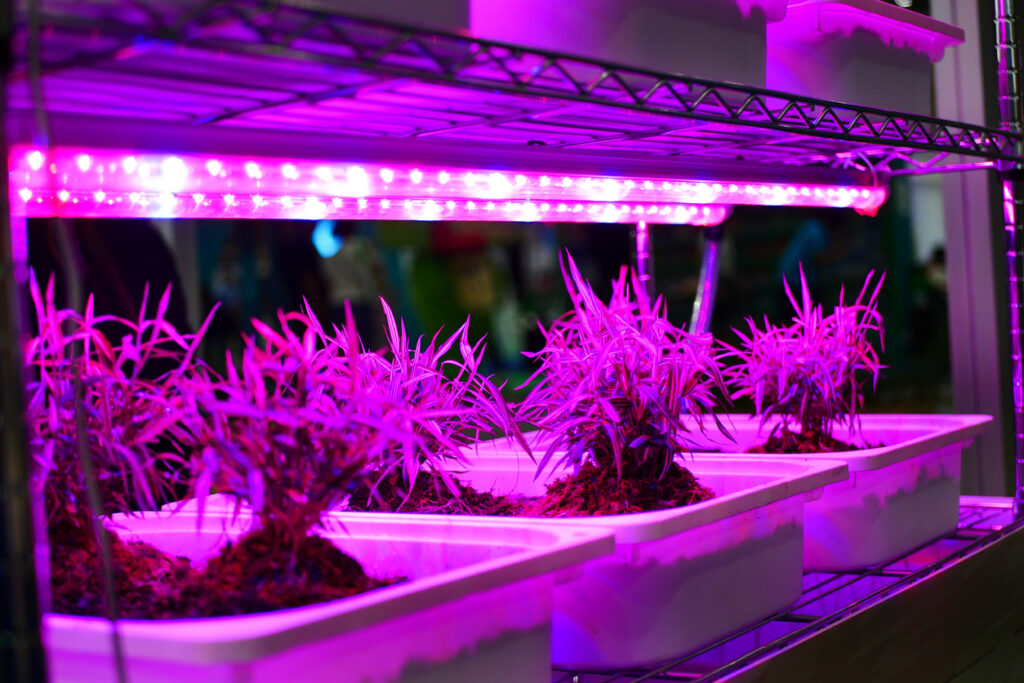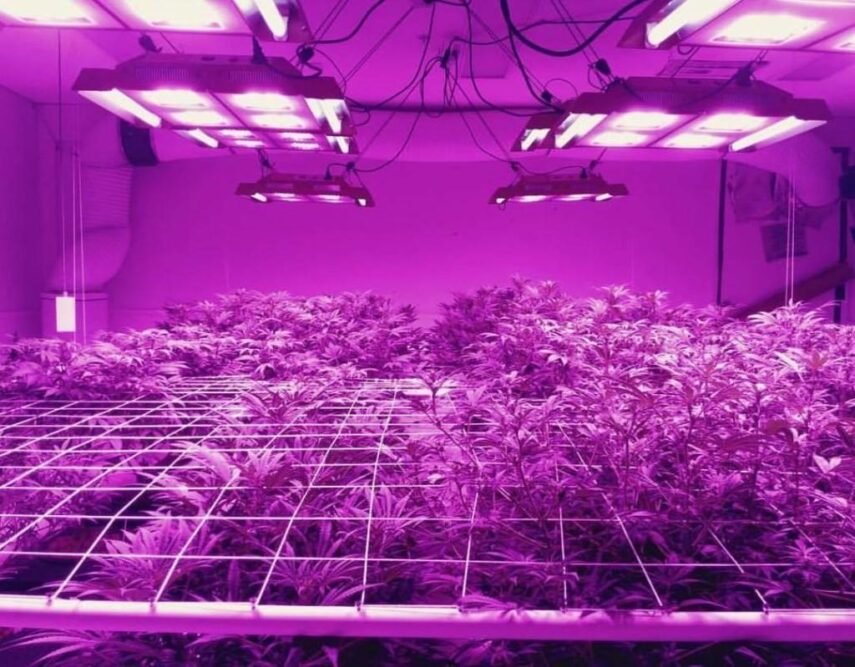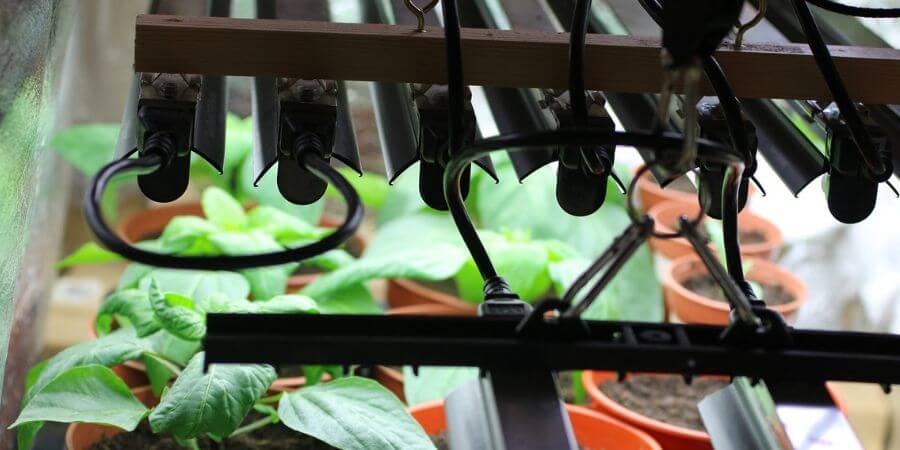Investing in the right equipment is a big aspect of any grow op, and selecting the right lighting system is arguably the most important part of that. The first step in choosing grow lights is to decide on the right type for the crop, and a lot of growers these days feel that the best way to go is with an LED lighting system.
A big reason for this is that LED lights are super efficient on energy, but even more importantly, they’re super efficient on heat. Unlike HPS lighting, which gives off an insane amount of heat that can be difficult to control and wreak havoc on grow room temperatures, it’s very unlikely that this will be a problem with LED lighting.
Once you’ve decided that LED lights are the right choice, it’s time to go out and buy the first LED grow light fixture you come across… Wrong! There’s a lot more work to put in to find the perfect LED light for your indoor plants, so here are a few things you should look out for.
The Type of LED Lighting

There are a few types of LED lights to choose from, so you want to make sure you’re getting the right type for an indoor grow room. It goes without saying you won’t be using standard LED bulbs for your indoor crop, but that still doesn’t explain which type of LED grow light is best.
While all types of LED grow lights use the same lighting technology, they don’t all feature the same design and style. There are differences in the way the diodes are spread (like spider spread vs traditional panel) and differences in the way the light is administered (like whether it’s set to veg or bloom).
If you’re new to this, it’s best to go with a traditional LED panel. This type of fixture is easy to use and most fixtures on the market today are traditional.
Consider the Wattage
No matter what type of lighting you go with, you’ll always want to pay close attention to the wattage. While there are times when watts don’t matter, like for household lighting, wattage always plays a role in the LED fixture you choose for your grow room.
To determine the wattage you need, you’ll first want to consider the surface area you’re trying to cover. Most growers follow the rule of thumb that you should aim for 35-50 watts per square foot if you plan on using LEDs. It can be slightly lower than this if the space is designated for plants in veg, but overall, try to follow that rule when you make your calculations.
So let’s say you’re aiming for 50 watts per square foot. If you’re using the standard 4×4 tent, which has a square footage of 16, you’ll multiply 16×50 and get 800 watts. For better coverage, you’ll want to steer clear of using a single light with such a high wattage, but go with 2 400-watt lights or 4 200-watt fixtures instead.
The Reviews from Fellow Growers

Checking out posts like this with LED grow light reviews before buying a fixture might seem like a no-brainer. With that said, you’d be surprised by how many growers pull the trigger on a purchase before looking into the opinions and experiences of others.
Try to avoid buying a fixture that has no ratings, and start by browsing for lights from reputable brands that have made a name for themselves. A positive review speaks for itself, so hundreds of positive reviews says a lot even if it’s slightly more expensive.
Durability & Quality Construction
LED bulbs are rated to last as long as 50,000 hours, so you’ll want to choose a system and fixture that can last just as long as the bulbs. Look for one that’s made with durable material and components, and whatever you do, try to stay away from a cheap, Chinese-made LED. Those prices are cheap, but they’re usually too good to be true.
Look Into the PAR Value
PAR is short for Photosynthetically Active Radiation, and it’s important for a few reasons. Light is necessary for photosynthesis, but some types of light are more useful for performing photosynthesis than others. The PAR rating of light helps to determine its value for photosynthesis, but higher doesn’t always mean better.
This is one aspect of LED light shopping that can get confusing for growers, especially for those who don’t consider themselves science experts. To make things easier, the main thing to look for when it comes to PAR is an even distribution.
When lights in the center of a fixture have a higher PAR value than the bulbs on the outer edges, this causes the plants that are positioned further away to suffer. With a fixture that has even PAR readings for all bulbs, all plants will get the same high-quality light, no matter their placement in the garden.
Consider the Cooling System

Just because LED lighting runs cooler than hotter HP bulbs doesn’t mean you can completely ignore the need for a cooling system. Just like all lights, LED fixtures give off at least some heat (even though it might not be much), so cooling components are still necessary.
Depending on the phase of the grow op and stage of plant development, your lights could be running for 18 hours every day. That’s a lot of hours, so you can definitely expect some heat output. With LEDs, the heat tends to build around the back of the bulb, so that’s where there should be a heat sink to dissipate some of it.
A Final Note on Choosing the Right LED Grow Lights
The main takeaway for choosing the right LED grow lights is to avoid being cheap. While you can certainly skimp on other aspects of a grow room, this isn’t the case for your lighting. So look for a quality LED fixture that’s durable, has good ratings, and delivers the right number of watts.







